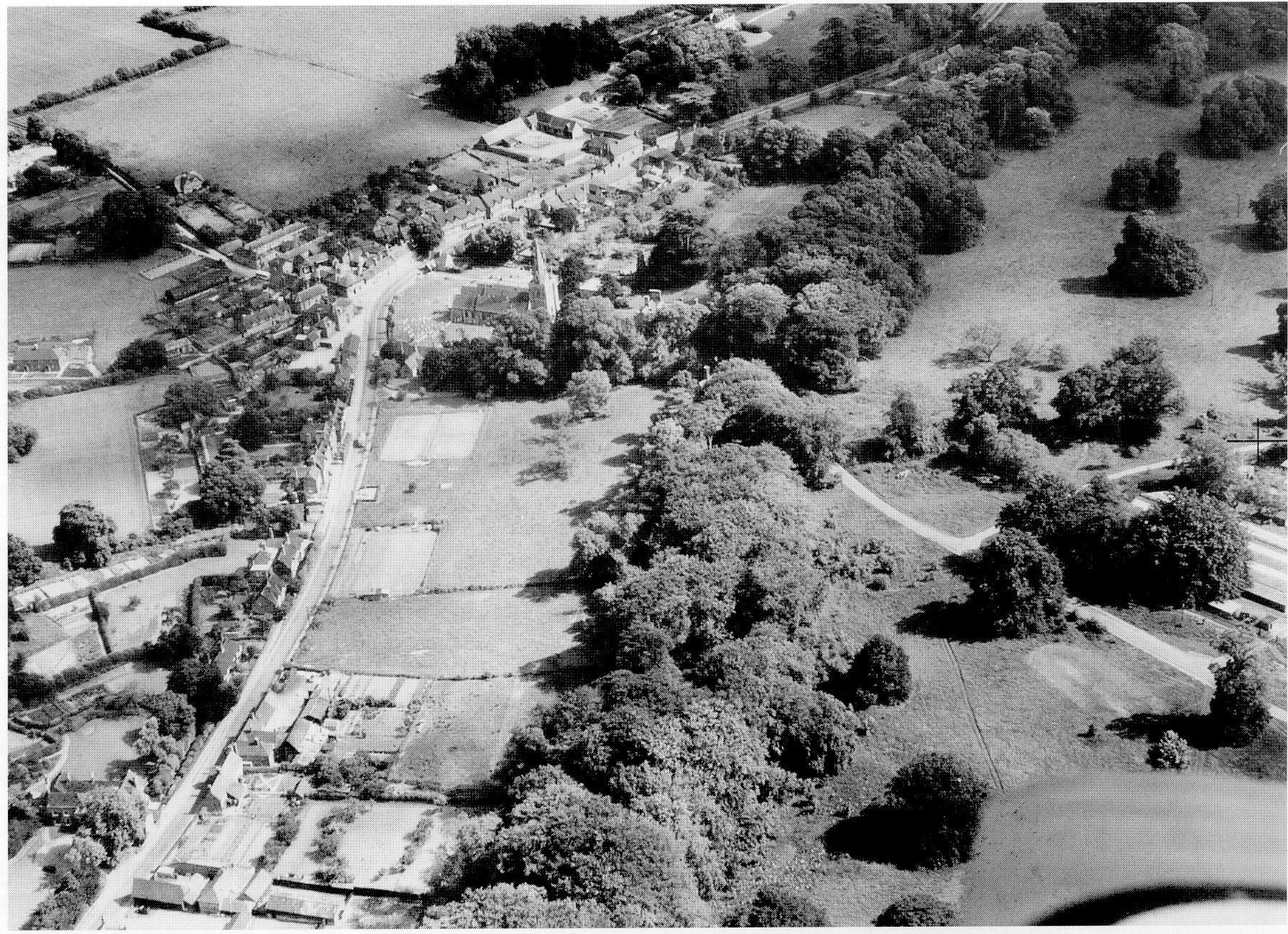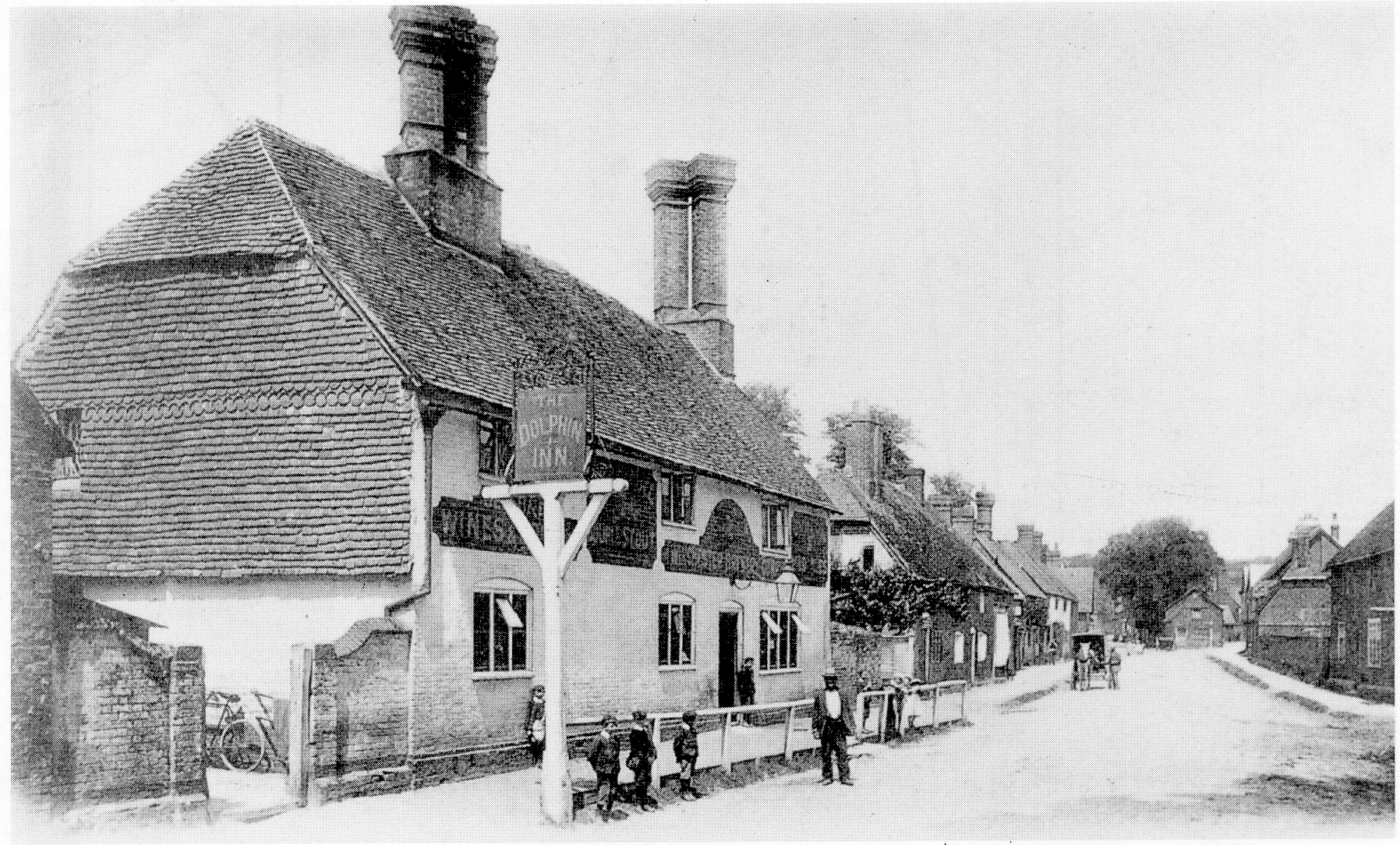Hursley Village
It is highly probable that the name Hursley was derived from Hurstleigh - ‘hurst’ meaning a wood, and ‘leigh’ meaning worked or pasture land: the derivation is certainly characteristic of the spelling modifications that time has wrought on many other English place names.
Hursley village is situated on the Romsey Road out of Winchester (A3090) about 4.5miles (7.1km) from Winchester and 6 miles (9.5km) from Romsey. When Hampshire was administered in subdivisions called ‘hundreds', Hursley came in the Buddlesgate Hundred, which included some isolated pockets of land - one of which, by a quirk of history, later contained another IBM location, Millbrook. The existence of the Buddlesgate Hundred and an assessment of its valuation are recorded in the Doomsday survey (1086), though no mention is made of Hursley and Merdon because they were at the time Church lands.
Around 1800, the parish of Hursley covered some 10,500 acres (4,250 hectares), bounded by Sparsholt on the north, Winchester and Compton on the east, Otterbourne and North Baddesley on the south, and Romsey, Michelmersh and Farley on the west. Today the parish area is smaller - around 5,000 acres (2,023 hectares) - mainly because of the newer parishes of Ampfield and Chandler’s Ford.
There is no hard evidence to tell us when Hursley originated, but there are two possible times when Hursley might have come into existence. One was around the year 500, when the Saxons displaced (probably with force) the Celtic/Romano descendants living within the Iron Age ring, to establish a defendable manor and village there. The other was when the Normans (with more legal justification) displaced any Saxon descendants living in the manor and village there, so that Bishop Henry de Blois (half brother of King Stephen) could capitalise on this defendable site for one of his castles for defence in the Stephen/Matilda wars. It is because the whole area belonged at that time to the See of Winchester that Bishop Henry could legally claim the site for one of his castles.
Evidence in the village today of habitation from the Saxon period is limited to a few stones in the church tower and some other isolated finds that at best faintly suggest, rather than confirm, a village then. If the village did exist in Saxon times, it is doubtful if it amounted to any more than twenty dwellings. The suggestion of earlier habitation is even more tenuous.
When the castle was built at Merdon a number of local inhabitants would have been conscripted to work on its construction, and some would have later served there. It would seem that generally the villagers were dependent on agriculture and would have been beholden to the Bishop of Winchester for the rights to farm in the manor. A varying number of village workers would have been employed either at the castle or (after 1413) at the site of the present house, according to the fluctuating fortunes of the Manor Lords. The villagers’ prosperity was affected by the Manor Lords’ attitudes which ranged from uncompromisingly feudal to benevolent after 1718. Since then the more enlightened owners of the Manor who owned most of the Village have helped Hursley keep its old-world character right up to the 21st century. The owners’ control was such that, in 1905, the estate employed some 200 people - probably most of the breadwinners of the Village.
 Aerial view of Hursley village looking south, c. 1946
Aerial view of Hursley village looking south, c. 1946
In Anglo-Saxon times it seems Merdon was spelled in a variety of ways, and by the 13th and 14th centuries it settled as ‘Merdone’, as shown in the stylised logo title on the cover of this book. When the ‘e’ fell off the end is not clear, but Merdon is now in common usage.
Hursley has always been part of the Manor of Merdon, and because there has not been a consistent manor house down the years, confusion has arisen over the roles played by the Merdon Castle and Hursley Park House sites. Up to the year 637, the manor lands were controlled as such from the Merdon Castle site, where there was a manor and village in Saxon times. For the next 915 years (637 -1552), control lay with the Bishops of Winchester. From 1559 to 1600, the manor rights rested at the Great Lodge in Hursley Park, and were then transferred to the house called Merdon Manor, the precise location of which is in doubt. It could either have been a farmhouse that once stood within the castle earth works, or the older or original part of the present Merdon Manor, less than 0.6 miles (1km) t0 the west of Merdon Castle. The manor rights rested at Merdon Manor only until 1630 when they reverted back to the site of Hursley Park House, remaining there till 1940, when the Second World War caused the manor rights to be transferred to Merdon Manor (now an Edwardian house with a much older wing, west of the castle). In 1984 Merdon Manor and the Hursley Estate (everything except the House and 100 acres of parkland around the House) were sold separately, and now the manor rights such as they are rest at the estate office. The present owners of Hursley Estate are the St Martin’s Property and Investment Company Limited, a subsidiary of the Kuwait Investment Corporation.
 South end of Hursley village
South end of Hursley village
Since the Second World War the style of farming has changed on the Hursley Estate, with the whole estate managed from the estate office, now in the old laundry house next to Home Farm, and the copyholders, or tenant farmers, are now a feature of the past as the Estate is generally managed as one large farm. In the 1950s when the estate was still in private ownership, a rather attractive bungalow was built as an estate office west of Hursley House stables. The office moved to its present site in the old laundry house when IBM bought the Park House and 100 acres (40 hectares) bounded by the access road west of the village.
In 1940, the function of Hursley Park House changed from private to commercial, when Vickers Aviation Ltd. leased the premises for aircraft design and development brought about by the Second World War. Since 1958, IBM have used the site for their United Kingdom Development Laboratories, buying the House and grounds in 1961/62. At this time a few farms were also sold off on the west side of the estate by the owning family to help pay death duties.